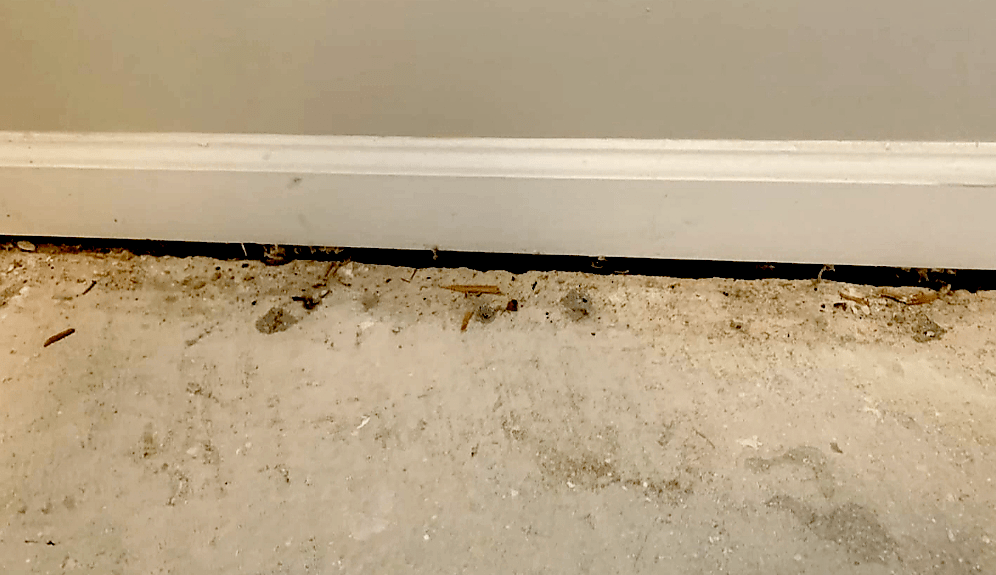Understanding Foundation Problems
COMMON SIGNS TO LOOK FOR
Identifying foundation issues early is crucial for maintaining the structural integrity of your home. Various factors can contribute to foundation problems, including soil conditions, climate, plumbing leaks, poor soil compaction, and inadequate drainage. Here, we outline the most common foundation issues and their signs to help you protect your property.

CRACKED BRICKS
Inspect your brick and masonry regularly for noticeable changes such as cracking and flaking. Proper drainage systems can prevent water accumulation and related brick and masonry problems.

STUCK WINDOWS & DOORS
Difficulty opening and closing doors and windows can be a sign of foundation settlement. Gaps at the top of a door indicate that your foundation may need leveling.

EXPANSION JOINT SEPARATION
Expansion joints compensate for natural changes in the earth, humidity, wind, rain, and temperature. If your foundation settles unevenly, it can cause these joints to separate, leading to further cracking.

STREET CREEP
Thermal expansion and contraction of concrete streets and pavement can cause the street to “creep” and exert pressure on the foundation, leading to potential damage.

FLOOR & CEILING GAPS
Uneven settling of your property exerts pressure differently, causing gaps between the floor or ceiling and the walls. This issue indicates that your foundation is not stable.

GARAGE DOORS
Regularly check your garage for signs of foundation failure such as cracks, sloped floors, and sticking doors. These signs are often caused by shifting soil beneath the foundation.

DRYWALL CRACKS
Drywall cracks can result from excess structural pressure, poorly installed drywall, or significant settling of the property. Addressing these cracks early can prevent further damage.

SLAB CRACKS
Cracks in your slab foundation indicate uneven settlement and can lead to serious structural issues. Cracking concrete slabs need immediate attention to maintain foundation integrity.

UNEVEN OR SLOPED FLOORING
When a foundation settles unevenly, it causes the structure to shift downward, leading to sloped floors. This problem requires professional evaluation to determine the cause and solution.

WINDOW SEPARATION
Gaps between windows and walls suggest foundation settlement. These gaps often point to the direction of the settling and need to be addressed to prevent further imbalance.

TILTING CHIMNEY
A leaning or tilting chimney indicates unstable soil or foundation problems. Shifting ground can cause the chimney to lean, which is both dangerous and unsightly.
Why Choose Innovative Foundation Repair?
Experienced Professionals
Our team consists of certified experts with extensive experience in foundation repair. We use the latest techniques and high-quality materials to ensure lasting results.
Customer Satisfaction Guaranteed
We prioritize excellent customer service, working closely with you from the initial consultation through to the completion of repairs.
Local Expertise
We understand the specific soil and weather conditions in the area, allowing us to provide tailored solutions for your foundation needs.
Warranties & Financing Available
When you are looking for the right company to repair your foundation, reliability is key—reliability of the company, the repair, and the warranty. Innovative Foundation Repair offers various warranty protection and financing options, giving you the peace of mind needed to make the best decision for you and your family.
Reliable Warranties and Flexible Financing Options
At Innovative Foundation Repair, we ensure long-term protection and peace of mind with our lifetime warranty for all foundation repairs. To make quality foundation repair accessible, we offer flexible financing plans tailored to fit your budget. Contact us today to learn more about our financing options and choose the one that best suits your needs.
Contact Us Today
Don’t wait until minor foundation issues become major problems. Protect your home with the expert foundation repair services from Innovative Foundations. Contact us today to schedule your free inspection and take the first step towards a safer, more stable home.



